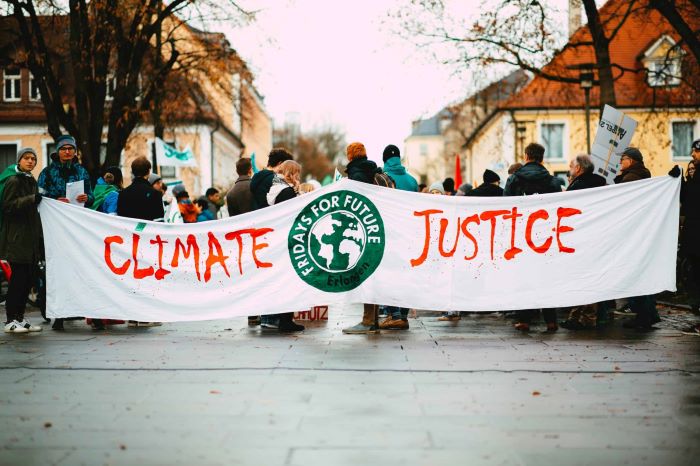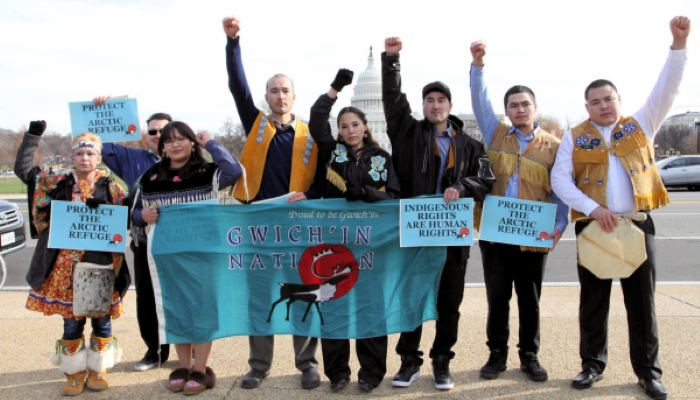Our country is in a moment of reckoning: a challenging, but necessary confrontation with our deeply discriminatory and racist past and present. This ongoing uprising is an opportunity to acknowledge the wrongdoings and trauma created by systems that have embedded racism into American life. These same systems have deemed our planet and its resources disposable, and left the most vulnerable communities to suffer in the aftermath of destruction. And it takes all of us— in all of our work—to try and reverse this pattern.
We are fighting a battle on many fronts: racism, environmental degradation, and a nature crisis. The United States alone is losing a football field worth of land every 30 seconds due to sea level rise and the loss of stabilizing sediment. This reality leaves frontline communities on the forefront of life-threatening climate disruption, more prone to pollution without nature’s ability to filter the air and water, and with less access to outdoor spaces and its health benefits.
The work to conserve nature—a staple in the mainstream environmental movement’s history and considered the Sierra Club’s legacy work—is ongoing and urgent, but it’s also evolving. It must continue to evolve to finally reflect the realities of our society and the consequences of our wrongdoings, and acknowledge the injustices communities are facing in a world in the midst of a climate, extinction, and human rights crisis. A movement once defined by preservation for the few must continue to transform and focus on saving nature to benefit and protect all.
Historically, the white-dominated land and water conservation work, outdoor recreation culture, and the environmental movement as a whole further perpetuated racism in this country. It started with ideas like those of Sierra Club’s founder, John Muir, an early preservationist, pushing problematic manifestos about the need to make nature pure. These ideas fed the notion that the outdoors was somehow separate from human affairs, allowing Native peoples to be ignored and limiting conservation to those able to focus solely on wilderness preservation— the same people insulated from systemic racism and brutality because of white supremacy.

Photo by Tammy Gan
Racism in the outdoors continued for decades with segregation in many national parks and public spaces, policies that removed decisions out of the hands of Native Nations and into the control of a white, male- dominated government, and can still be seen today in the ongoing selling and leasing of lands and waters to the detriment of communities of color for fossil fuel profit. Systemic racism has contributed to a pattern of “sacrifice zones” where many communities suffer the loss of green space, safe air and water, and quality of life for the benefit of pollutive industry. This trend has only exacerbated climate change and its devastating impacts on marginalized communities.
Working to center the voices and needs of those most harmed by the climate crisis must remain a priority in this work. But as a white person within the environmental movement, I continue to see an overwhelming majority of people who look like me at large environmental organizations. While representation of Black, Indigenous and People of Color (BiPOC) leaders is increasing, it is still notable the lack of seats at the table filled by those who are actually leading the on-the-ground solutions, while bearing the brunt of our environmental crises— namely at organizations like ours.
In 2020, more than three times as many communities of color live in nature-deprived spaces compared to white communities. Dirty energy infrastructure, pollution, and development are stripping over 76 percent of communities of color in the United States of green space. In addition, BIPOC people face a distrubing culture of discrimination and exclusion in outdoor spaces, especially in national parks and forests. These sobering facts tell us that work to preserve and expand access to nature, and make it a safe and inclusive community space, must absolutely center anti-racism.
Fortunately, community leaders recognize that reality, and have been leading the work that large conservation organizations have neglected for decades. Learning from these organizations, we’re working to build meaningful partnerships to strengthen the progressive movement.
Coalitions are forming to address the glaring intersections between environmental and social justice. And many of the grassroots organizers on our Lands, Water, and Wildlife team are teaching Sierra Club leadership as they go.
Our borderlands team partners with a large coalition of immigrant-rights and environmental groups who are committed to ending the militarization of communities in the border states and stopping the border wall’s destruction. The Lands, Water, and Wildlife campaign also continues strong work to stop oil and gas drilling in the Arctic National Wildlife Refuge, a charge being led by the Gwich’in Nation—whose homelands and way of life are in harm’s way. Our organizers are forming important on-the-ground relationships everywhere from Utah, Nevada, and Colorado to Connecticut and Massachusetts. We’re learning from the values of organizations and people who have connected the dots long before and far better than we have.

Gwich'in rally on Capitol Hill (2018). Photo by Indigenous Rising Media.
While we continue this work with partners, we are committed to necessary internal reflection and change, too. Our campaign organizers are leading an Equity Academy to engage volunteers and supporters on these important issues. The series of lessons will focus on the long history of inequity in the outdoors, ways to address our implicit biases, and how we can all actively work to facilitate change in this movement.
Now more than ever, we must recognize that race plays a huge role in our public lands and recreation policy. Within the Sierra Club’s Our Wild America campaign, we are actively working to address the racial disparity that has plagued our parks, natural spaces, and the conservation movement for too long. This means—especially in our lands, water, and wildlife work—we need to continue to better coordinate with local communities, prioritize the leadership of people of color, and make anti-racism a core value of this work. We’ve often missed the opportunity to tackle big-picture issues that could make our country a more equitable, healthy, and just place.
Nature is not just an escape for the wealthy and white as dangerously implied by early preservationists. Access to nature is a human right, and preserving it is unequivocally imperative in fighting the climate crisis. The inspiring work being led by community leaders across the country shows us a better, more inclusive movement is on the horizon. The environmental movement will take all of us—united and unwavering—to save our planet and everyone on it.
